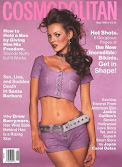Fashion History ; Evolution of the Beauty Standard
From celebrating curves in the 50s thanks to Marilyn Monroe , to heroin chic in the 90s a la Kate Moss- women's body types go in and out of fashion as much as clothes do. From a young age, women are constantly subjected to the idea of the 'ideal woman'. This is sold to them through magazines, adverts and various other forms of propaganda in order to maintain women in a subset box or category. In the 50s, women were encouraged to be soft, curvy and smooth- fitting in with the maternal ideals that were reinforced during this decade. Personally, I would not want to be described as soft or smooth, its dehumanizing as well as restrictive. But back then, women aimed to be as feminine as possible, a stark contrast to the Rosie the Riveter movement a decade before. The concept of the 'siren' was also created, often used to refer to Hollywood stars such as Marilyn Monroe and Marlene Dietrich. Women celebrated their curvy figures and this carried on well in to the 70s.
This is where women began to campaign against magazines such as cosmopolitan, that promoted harmful female stereotypes such as the need to wear makeup and constantly remove unwanted body hair, as well as remaining virtuous and polite. This fitted in with various peace movements during this era such as protests against war, violence and women's rights. A rise in feminism contributed largely to the change in feminine attitudes with magazines taking a different approach to raising young girls, before social media was even invented.
Therefore , in the 90s, a more androgynous look was celebrated and a new body type came in to fashion. From the runways of New York and Paris, models were admired for their skinny, lanky frames often resembling the body of a young boy. This subverted the gender norms from previous decades, with fashion proving to be genderless. With less curvy girls being the new standard. Where as before models were petite but still healthy, the 90s brought on a a wave of models that went to unhealthy means in order to achieve the new body standard. Kate Moss famously quoted as saying 'nothing tastes as good as skinny feels', only shows the negatives to making such small frames popular in the fashion industry. As designers made their clothes smaller, models were forced to keep up within these insane measurements. The fashion industry had been known to enforce unhealthy measurements in the past, but it really hit its peak in the 90s- with heroin chic being a term coined for 90s models, as drug abuse became common in the industry.
Fast forward to today, where body movements led by celebrities such as Rihanna and Emma Watson have helped normalize all body types. Shops such as H&M and Topshop as well as sites such as asos have expanded their sizing ranges to be more inclusive, and shops such as Brandy Melville who remain 'one size only' have come under fire for not being more inclusive. Kim Kardashian helped popularize the 'hourglass' body type, whilst plus size models such as Tess Holliday are breaking barriers within the modeling industry. We are closer to body inclusitivity than we have ever been, with women now being encouraged to love their body no matter its shape, and also putting an end to the harmful recycling and trending of the body standard.
Harpers Bazaar is is a reliable website and fashion magazine that is trusted and fact checked within the industry.




Comments
Post a Comment